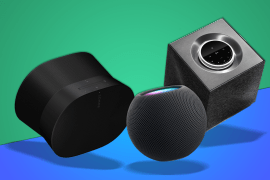Dali IO-8 review: opulent yet obtainable over-ears
Proof that simple really is best when it comes to wireless headphones?
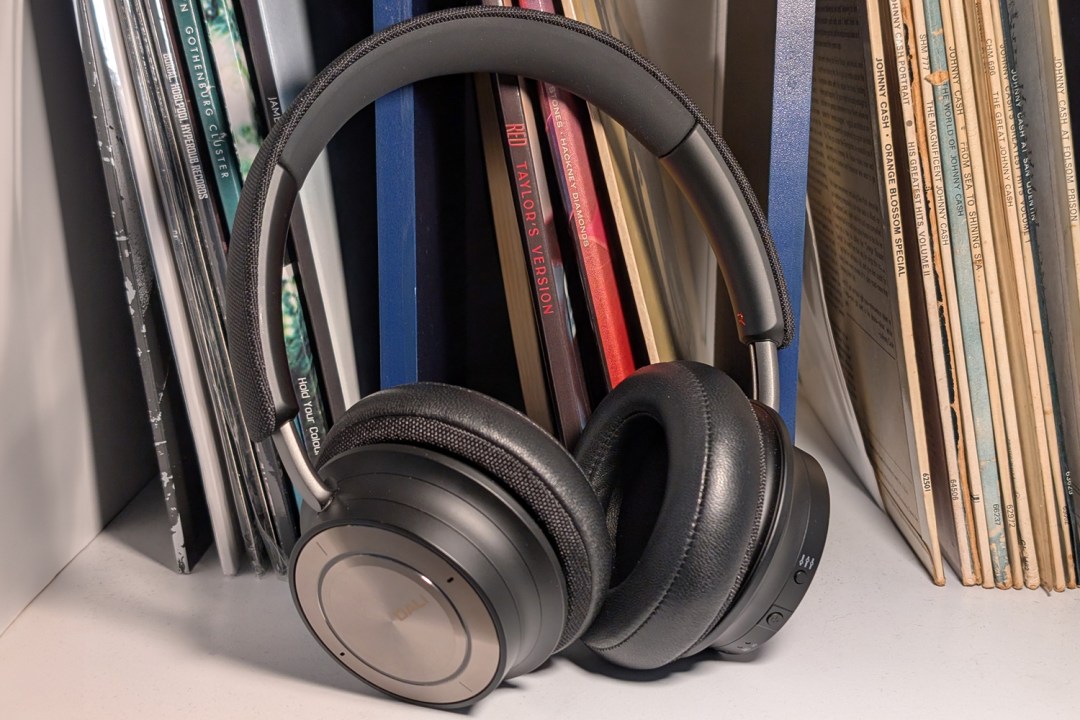
Stuff Verdict
These luxury over-ears have a one track mind. Audiophiles will love the Dali IO-8’s unwavering musical focus, and it holds its own everywhere else against all-rounder alternatives.
Pros
- Well-judged, smooth sound
- High-grade build justifies price premium
- Comprehensive physical controls and analogue input
Cons
- App-free approach means a limited feature set
- No vegan leather option
- Easy to find better noise cancelling for the money
Introduction
Mainstream brands have been trying to muscle in on high-end headphone territory for a while, but it hasn’t been a one-sided fight. The premium establishment has come back swinging, precisely where mass-market appeal meets audiophile excess. Danish speaker specialist Dali has done exactly that for the IO-8, diluting down its wireless flagship into something a little more obtainable – without forgetting what its fans care about most.
There’s aptX Adaptive Bluetooth, 24/96 playback over USB-C, and wired analogue listening hasn’t been forgotten either, so sound quality is still very much the focus. Active noise cancellation still makes the cut, but it’s the sort that’ll never colour your music to mute the outside world. There’s been no skimping on materials, either.
At $899/£599 it’s taking on other premium-grade headphones including the Bowers & Wilkins PX8 and Focal Bathys. But seeing how the Dali IO-12 only squeaked under four figures by the narrowest of margins, could the IO-8 be almost affordable in comparison?
How we test headphones
Every pair of earphones and headphones reviewed on Stuff is used for a minimum of a week’s worth of daily listening. We use a playlist of test tracks made up of multiple genres to assess sound, and use our years of experience to compare to other models. Manufacturers have no visibility on reviews before they appear online, and we never accept payment to feature products.
Find out more about how we test and rate products.
Design & build: shell for leather
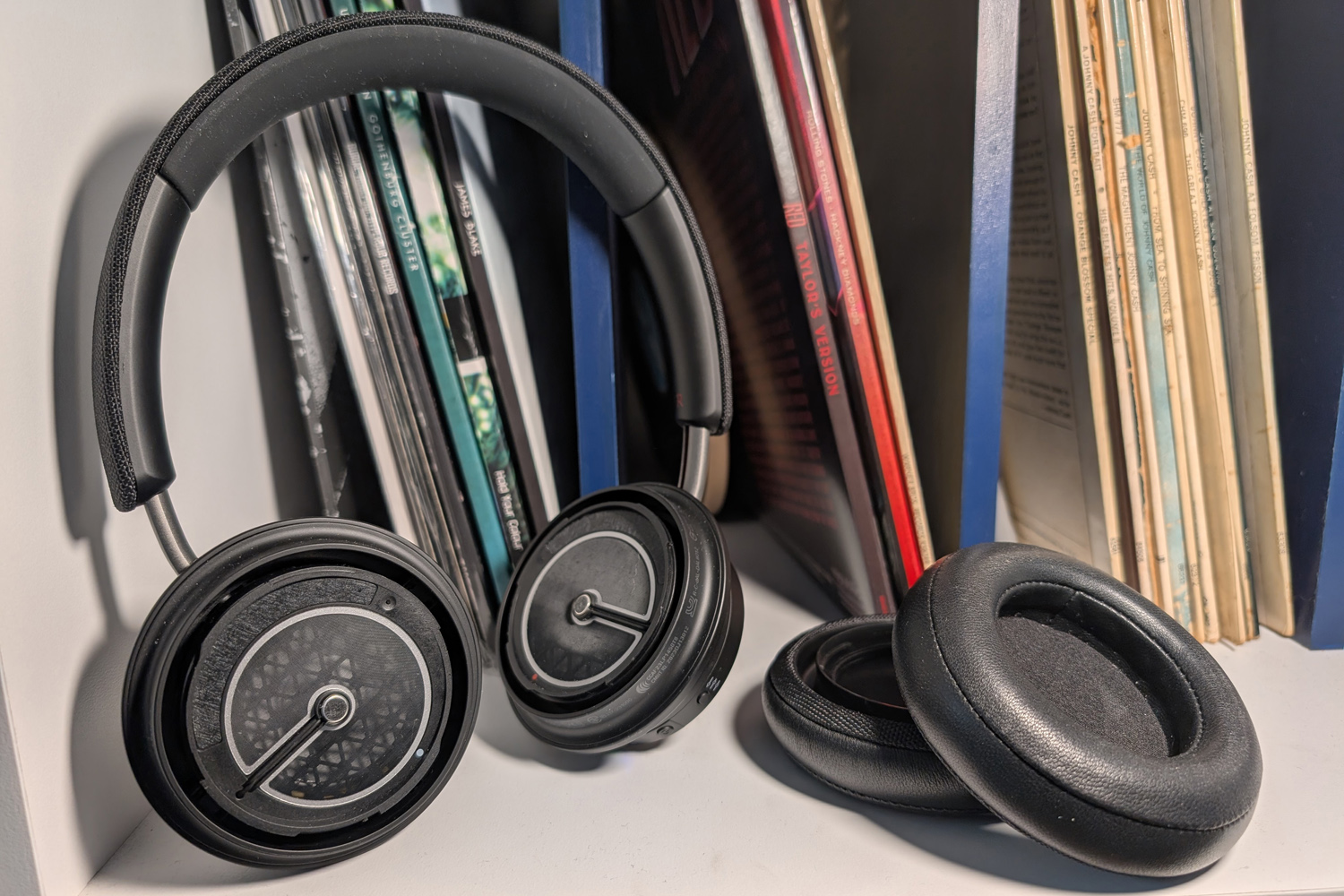
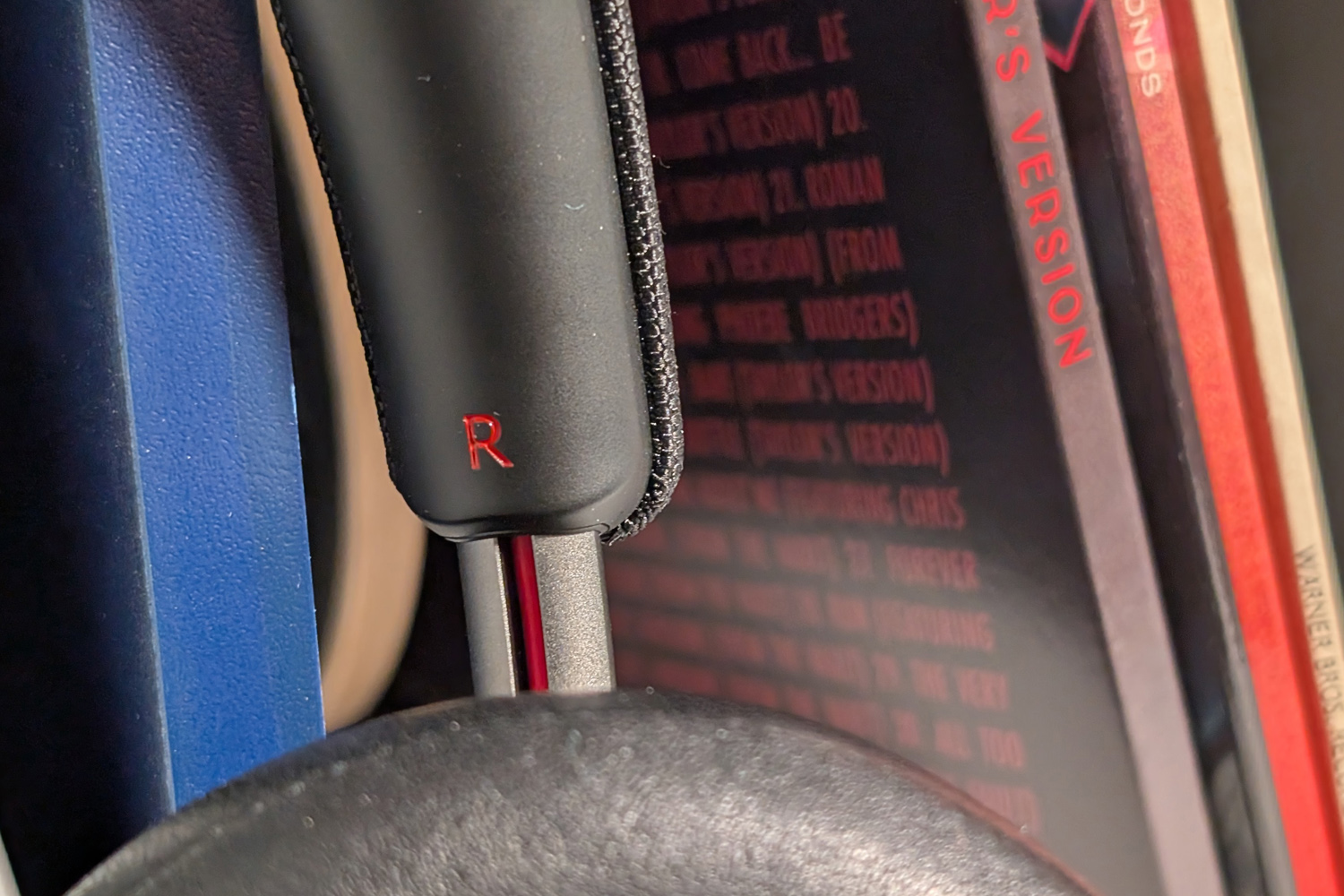
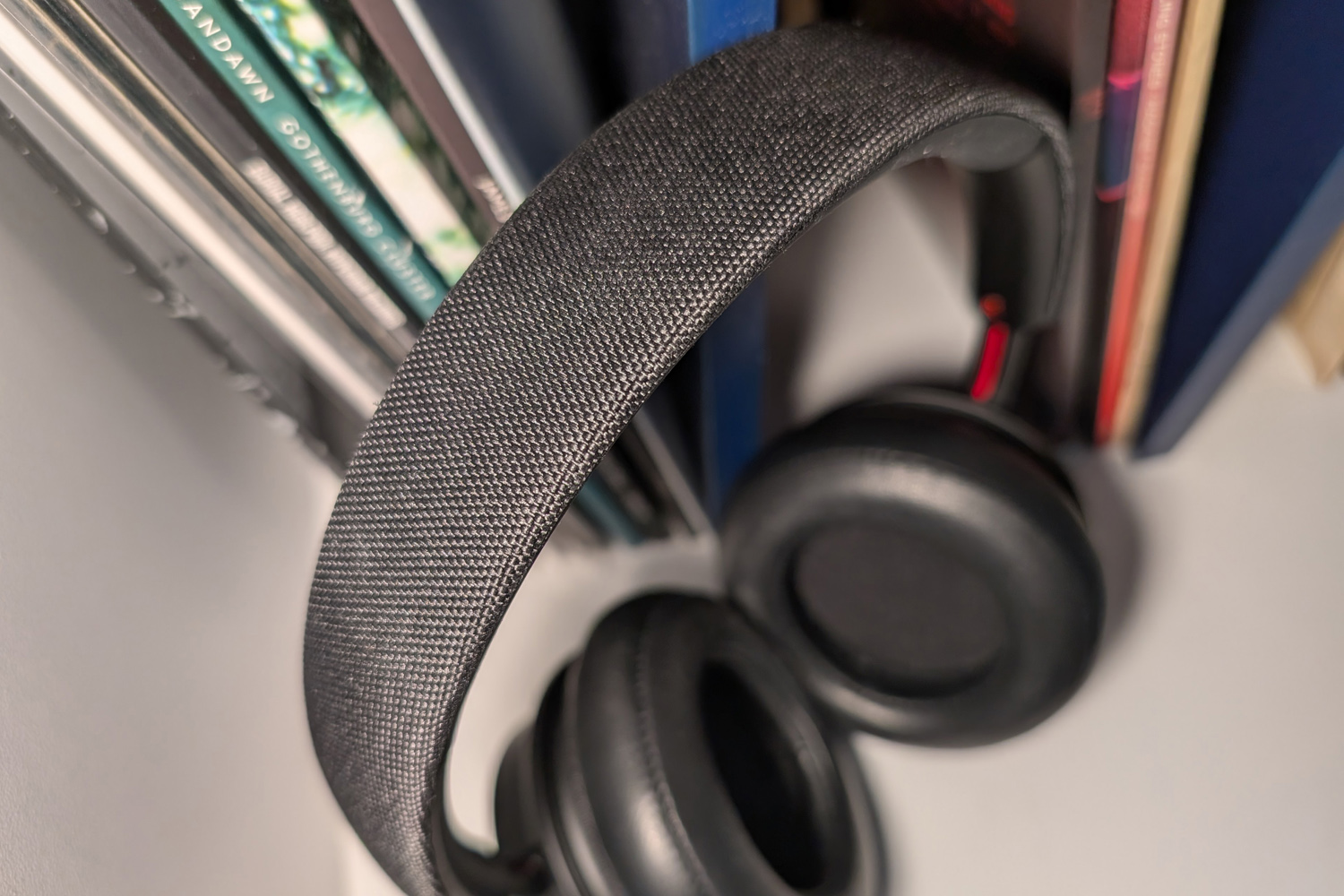
Round ear cups and brushed metal trim give the IO-8 a slightly more traditional look than the IO-12. A sneaky look at the CE information reveals IO-12 branding that suggests the two have a few shared parts, though, so it’s really only the square-shaped ear pads and colour scheme that separate the two visually.
You get a similar fabric-wrapped headband, which feels suitably luxurious, has a reasonable amount of adjustment, and applies just the right amount of clamping force. There’s memory foam padding underneath, but not enough to match the Bose QuietComfort Ultra headphones‘ cloud-like cushioning feeling. At 325g these are lighter than the Focal Bathys, but considerably more than the more widespread Sony Wh-1000XM5 and Sennheiser Momentum 4.
The leather covering those chunky circular ear pads is genuine, and vegans aren’t offered a synthetic alternative. The cups themselves have a good amount of tilt and pivot a full 180 degrees, so I had no problem getting comfortable. You’d need particularly large lugs for these to turn into more on-ear than over-ear headphones. Each pad twists off easily for cleaning or replacement, which bodes well for long-term ownership.
My review unit arrived in Iron Black colours; even with the anodised metal finish I think it’s the subtler of the two on offer. Caramel White mixes tan leather and textile with a white chassis and silver trim, which is more of a design statement than I’m looking to make with my tech. That said, both have more going on than somewhat stripped back headphones from the likes of Sony, Sennheiser and Sonos.
Features & battery: wired for sound
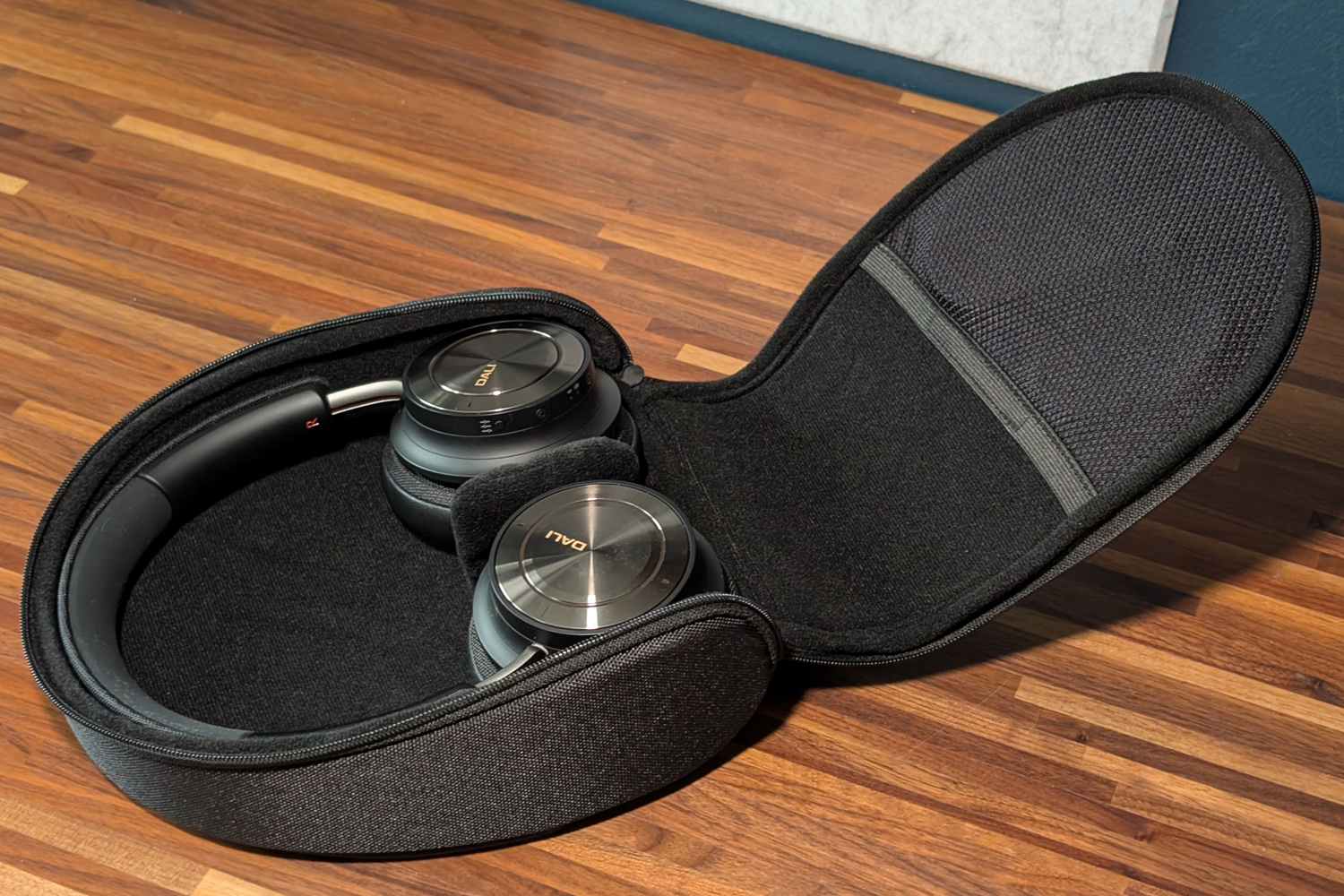
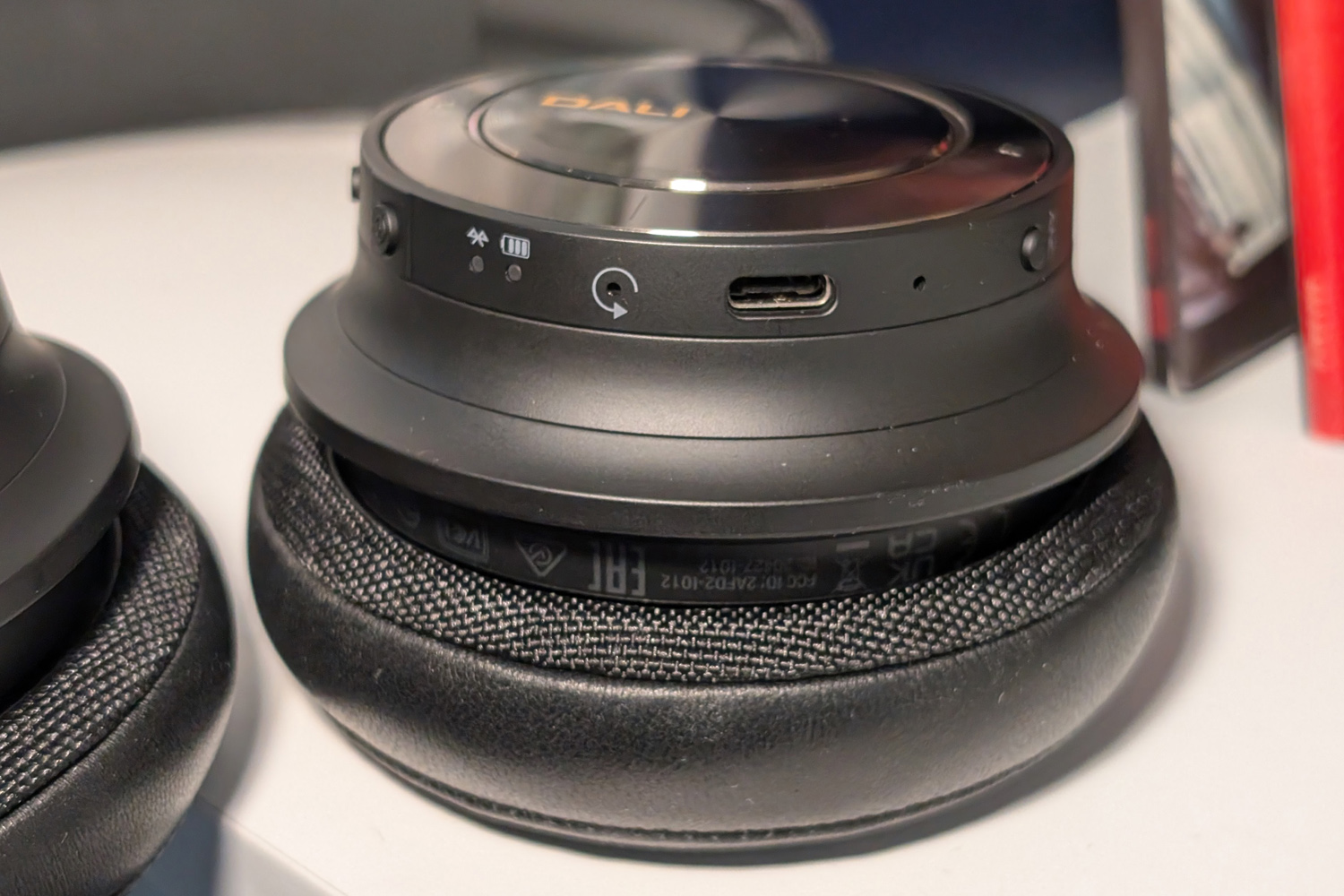
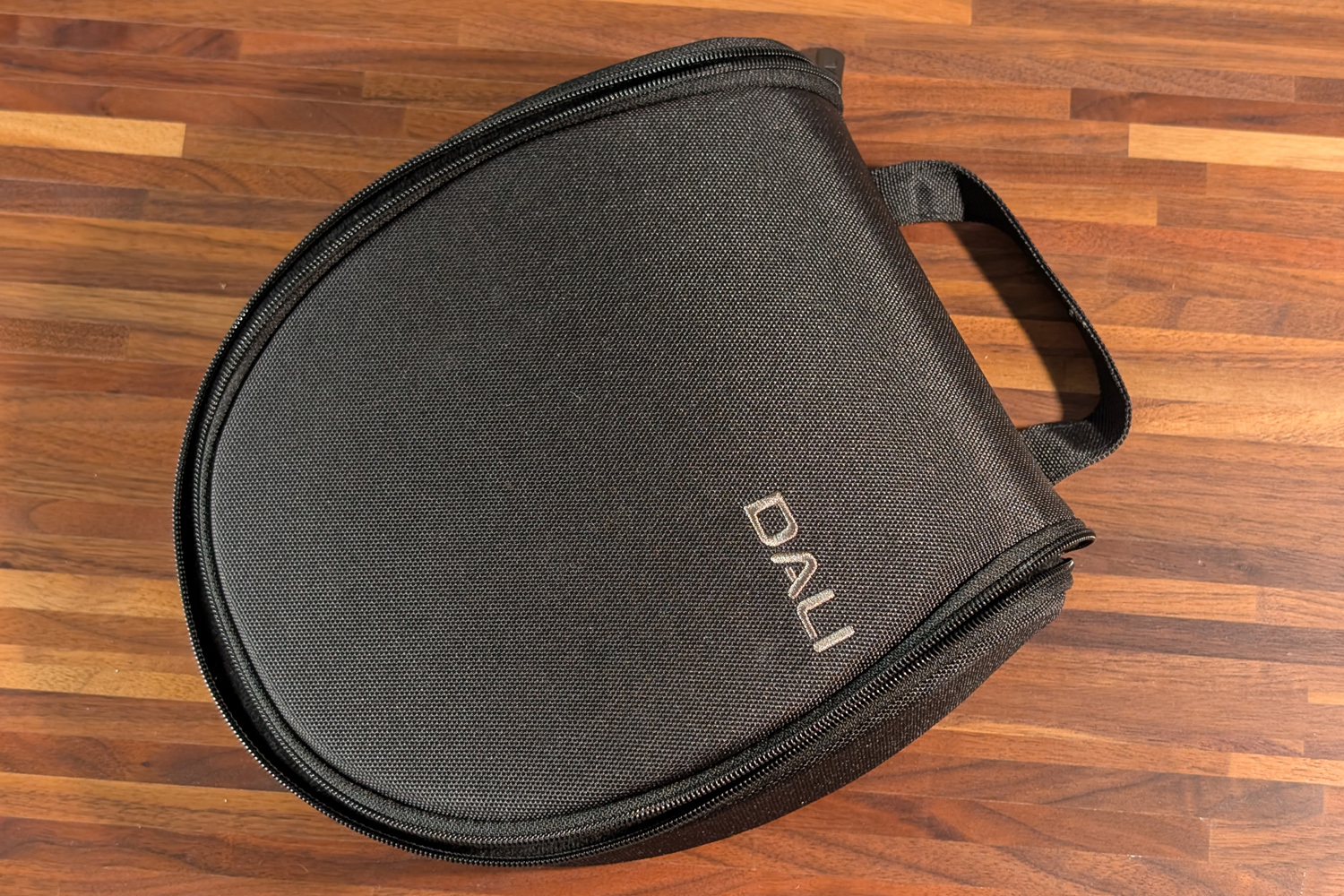
The IO-8 arrives in a fabric-lined textile hard case that’s handy for taking the headphones with you on the move. There’s room inside for the bundled USB-A to USB-C charging lead and 3.5mm auxiliary cable, but I didn’t think the materials felt nearly as high-end as the cases you get with the B&W PX8 or Focal Bathys.
Which cable you use dictates whether you’ll get 24bit/96kHz digital playback or true analogue listening from your source; the 3.5mm cable lets you disable the headphones’ internal amplification and digital signal processing entirely, so all the heavy lifting is done by your player instead. This passive mode doesn’t need any power, either, so you can use it when the battery is completely flat; its something the B&W PX8 can’t do.
On the wireless side, Bluetooth 5.2 isn’t exactly cutting edge these days, but the IO-8 still supports the aptX Adaptive codec for higher quality listening on compatible gear. I had no trouble pairing to two devices at once, either.
I saw very close to Dali’s claimed 30 hours of ANC-on listening via Bluetooth, and it’ll creep closer to 35 if you can go without noise cancelling. Charging from empty takes about two hours, and you can listen via 3.5mm while you’re at it.
Dali hasn’t deviated from the IO-12’s “no companion apps, thank you” approach, which is either a good or bad thing depending on whether you equate a long feature list with value for money. You won’t find head-tracking spatial audio, EQ-adjusting hearing tests or customisable controls here – just a handful of physical buttons that handle the basics.
3.5mm input aside, everything is found on the right earcup. The power button also handles Bluetooth pairing; there are dedicated buttons for toggling between ANC modes and the two EQ presets; individual volume keys; and a playback button that lets you skip tracks with a double-tap, or wake your phone’s voice assistant with a press-and-hold.
I like how a voice announces the remaining battery life and confirms you’re connected as soon as you turn the headphones on (in the most prim, proper British accent I think I’ve ever heard from a pair of wireless cans)
Sound quality and noise cancelling: audio comes first
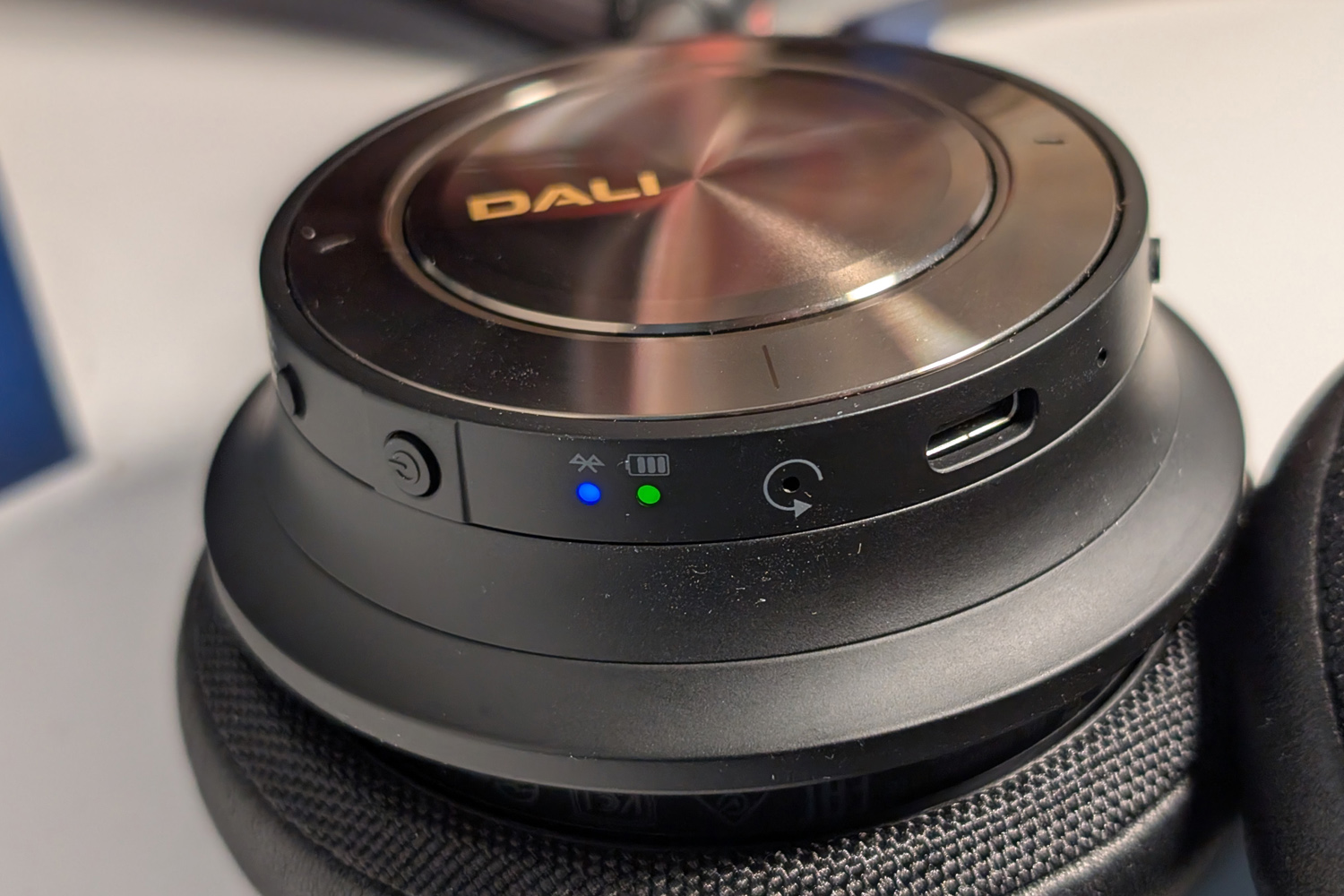
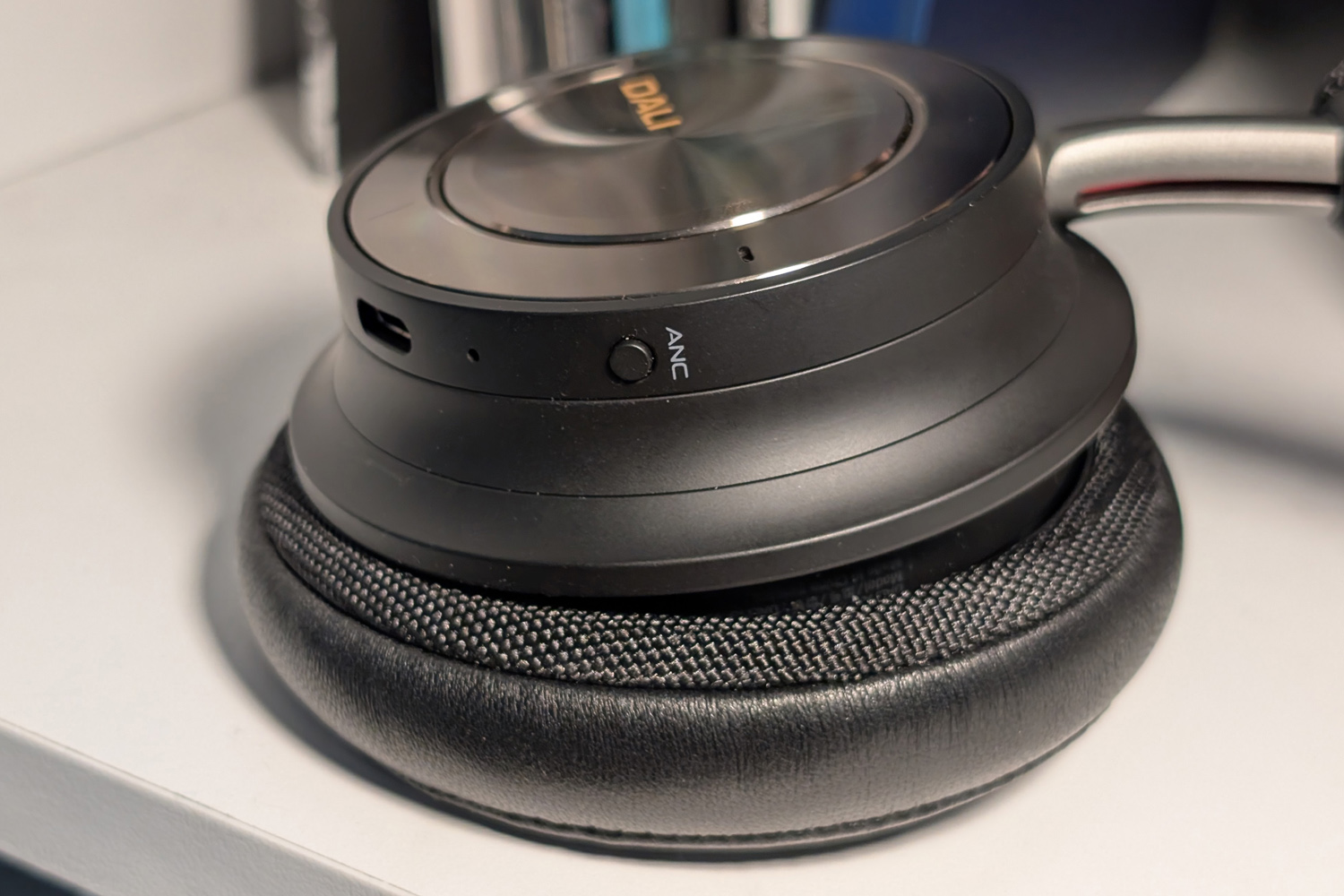
Dali says the IO-8 has ‘audiophile-grade ANC’, which is another way of saying these headphones aren’t chasing Bose, Sony and the rest for outright noise cancellation. Instead, the aim of the game is to reduce background noise enough that you can still pick out the details in your tunes, with no audible impact to sound quality. That seemed a pretty accurate description from my testing, where louder external noises would still creep through, but in most environments I could listen at 50% volume and still appreciate the subtle guitars on Eddie Kendricks’ My People… Hold On.
This also gave the IO-8’s 50mm dynamic drivers the best possible chance to shine. Dali’s tuning favours a balanced presentation, with presence at either end of the frequency spectrum and a smooth transition between the two. Sub-bass and bass notes have a satisfying impact, while hi-hats and vocals maintain a sense of crispness. They don’t squeeze out every ounce of detail like the B&W PX8, but are arguably a little more nuanced at the low-end.
I definitely preferred the standard Hi-Fi EQ preset; the Bass mode made my playlists sound just a little bit too boomy, adding an extra helping of low-end but distracting from the rest of the mix. There were certain tracks that I thought were still rather full-on in the Hi-Fi mode, making me wish for some sort of neutral or balanced preset – or better yet, a full custom EQ.
Chet Faker’s downtempo interpretation of No Diggity highlighted a satisfyingly wide soundstage, but equally these headphones also do justice to cosier compositions. James Blake’s more claustrophobic Fall Back avoided instruments stumbling over each other. In general, tracks aren’t pushed as forward or inward as its closer competitors, which I think makes these a great choice for fatigue-free long listening sessions.
Dali IO-8 verdict
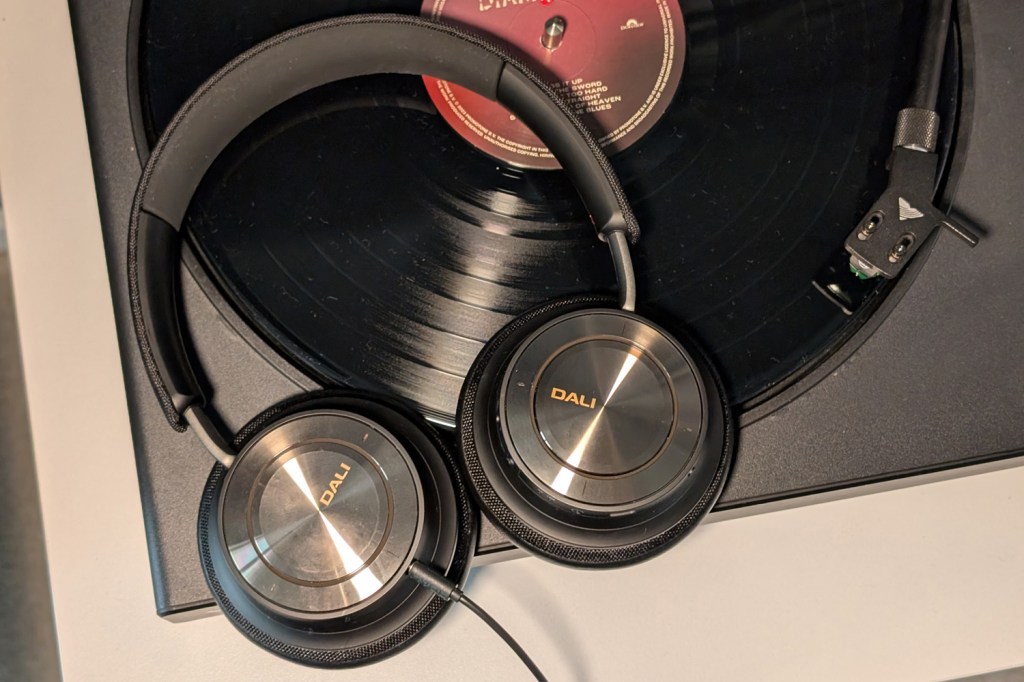
A few years ago, the Dali IO-8 would’ve been exclusively aimed at audiophiles – but it’s a different story today, long after the Apple AirPods Max effectively made £500 headphones ‘mainstream’. They’re not just going up against other high-end brands, and the competition is positively packed with features.
Whether you put an enjoyable listen ahead of companion apps and extra functionality will decide if these cans are worth your attention. They’re undeniably comfortable, have decent enough noise cancelling for the cash, and will arguably have a longer lifespan than some rivals thanks the option for true analogue playback. Sound quality is comfortably up there, too.
They’re not quite everyman headphones, then – the alternatives cover just one or two more bases – but there’s a lot to be said about Dali’s more singular focus.
Stuff Says…
These luxury over-ears have a one track mind. Audiophiles will love the Dali IO-8’s unwavering musical focus, and it holds its own everywhere else against all-rounder alternatives.
Pros
Well-judged, smooth sound
High-grade build justifies price premium
Comprehensive physical controls and analogue input
Cons
App-free approach means a limited feature set
No vegan leather option
Easy to find better noise cancelling for the money
Dali IO-8 technical specifications
| Drivers | 50mm dynamic |
| ANC | Yes |
| Connectivity | USB-C, 3.5mm, Bluetooth |
| Bluetooth version | Bluetooth 5.2 |
| Codecs supported | aptX Adaptive, AAC |
| Durability | IP52 |
| Battery life | 30 hours (ANC on) 35 hours (ANC off) |
| Dimensions | 179x225x93mm, 325g |



